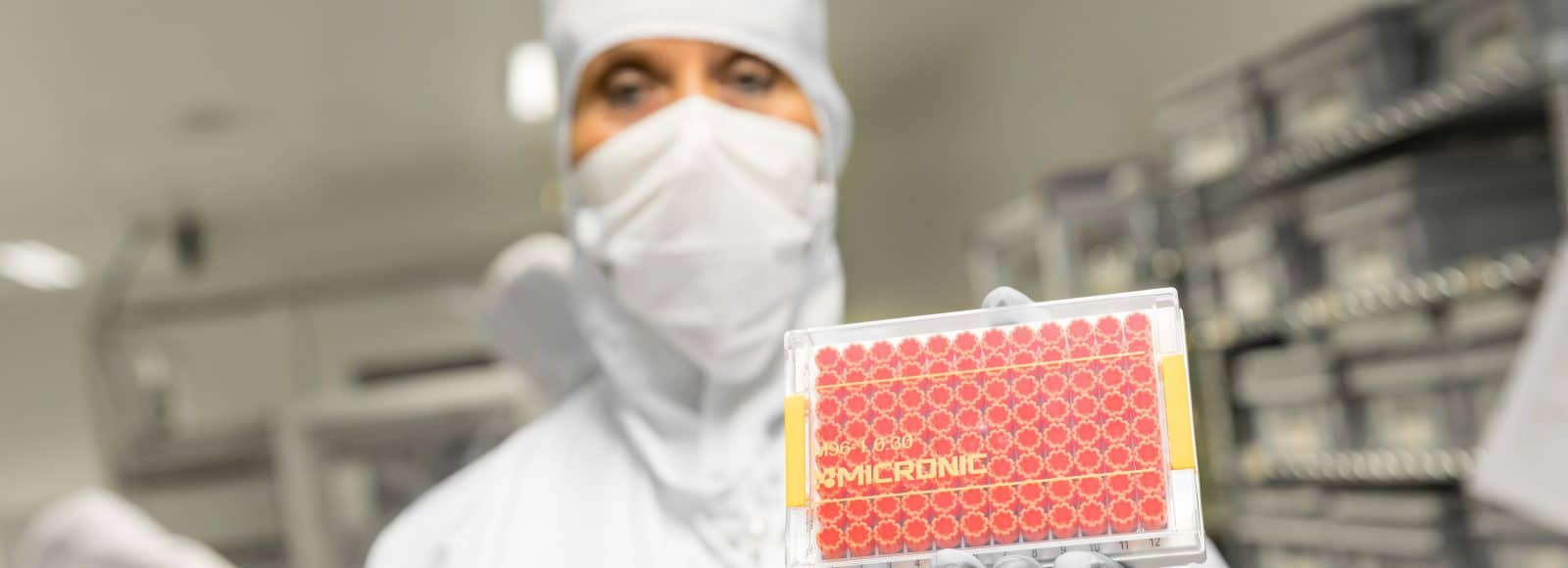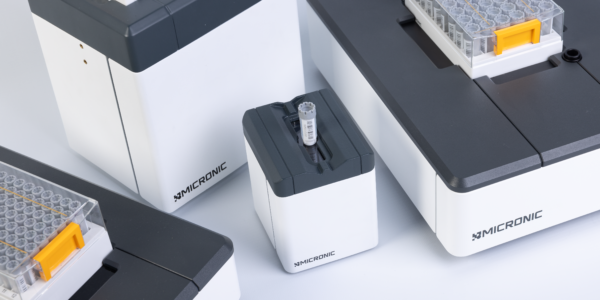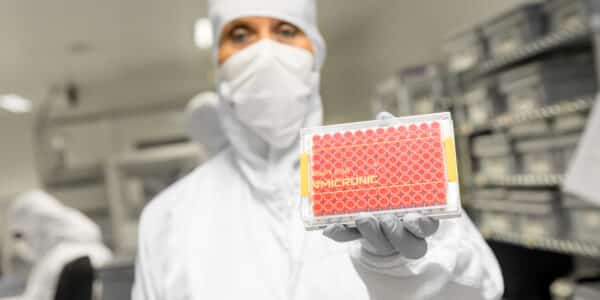

Decontamination of labware products
The definition of decontamination is: “the destruction of all living microorganisms, as pathogenic or saprophytic bacteria, vegetative forms, and spores.”[1] But how can labware products be decontaminated, which decontamination processes can help with this, and which spores is it free of at that time?
Class 7 clean room production
As first and foremost, it is important that the molding and assembly of the product happens in a clean environment. To make sure that this is the case, most labware used in the life science sector happens in a clean room. Micronic labware is manufactured and assembled in-house in a NEN-EN-ISO 14644-1 Class 7 certified clean room environment (which is comparable to the US Federal Standard 209E Class 10,000). In our clean rooms, sample storage tubes, caps and racks are packed in air-tight bags for storage or transportation. This prevents the entrance or escape of any air, in turn no contamination of the products can take place. By maintaining the highest possible hygiene level during our production processes, Micronic manufactured labware is free of any detectable RNase or DNase contamination and the endotoxin level of produced and packaged labware is limited to an acceptable minimum (< 0.01 EU/ml). Our products are periodically tested on RNase, DNase, and their endotoxin levels by independent expert organizations.
In the Clean room the labware is clean of any detectable RNase/DNase/Pyrogen. But the products haven’t been fully decontaminated in any way to destroy all viable forms of microbial life. To decontaminate it in this way there are two different processes that you can choose to further decontaminate the labware. They are Gamma Irradiation and an ethylene oxide treatment (EtO).
Decontamination by gamma irradiation
Gamma irradiation is the most common decontamination method used on labware. Full decontamination is a process that is intended to destroy viable forms of microbial life including bacteria, molds, yeasts, viruses, protozoa, and algae (including bacterial spores) to an acceptable Sterility Assurance Level (SAL). Decontamination by gamma irradiation can ensure a SAL of 10-6: a one millionth probability of microbial survival. Irradiation itself cannot guarantee that the product is free from any detectable RNases, DNases, or pyrogens, so class 7 clean room production is an essential requirement.
Decontamination using ethylene oxide (EtO)
The other decontamination method that can be used is using ethylene oxide treatment. Micronic has a range of sample storage labware available that secure the long-term integrity of DNA samples for forensic analysis. DNA sample storage is of paramount importance in forensic DNA, epidemiological, clinical, and genetic database laboratories. In forensic laboratories there is always the possibility, even after tens of years, that cases may be re-opened, and any stored DNA sample may need to be re-tested.
In recent years the sensitivity of recovery techniques has increased to allow levels below 200pg of DNA to be detected and analyzed in a forensic context. However, this increased sensitivity has led to an increase in the observation of extraneous DNA contamination from storage consumables, sold as sterile or DNase and RNase free, having been rendered fit for forensic analysis using ionizing radiation (UV, gamma, X-ray, beta).
Using a novel ethylene oxide treatment process – Micronic’s labware is independently certified to be absolutely DNA-free and therefore provide the perfect medium for long-term, high integrity storage of forensic samples.

